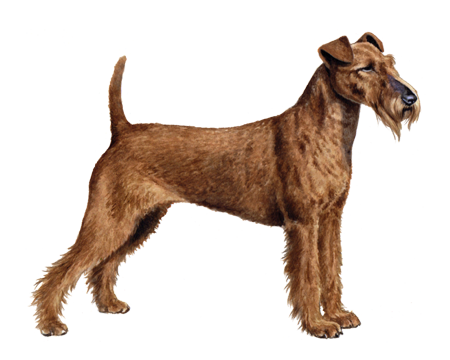
Silky Terrier
As gorgeous as its name implies, the Silky Terrier is an alert, intelligent, energetic, and spunky dog. Protective of their people, Silkies make good watchdogs. But with affectionate and friendly personalities, they're ultimately big softies.
Interested in discovering if your dog is a Silky Terrier?
Check out Wisdom Panel's DNA tests.

Silky Terrier Traits
General Appearance
The Silky Terrier is a sturdy, hardy breed known for its soft, silky coat. These dogs stand moderately low to the ground and are slightly longer than they are tall.
Coat and Colouring
This breed's signature coat comes in many shades of silver and tan. Silky puppies are born black and tan. But as they mature, the black changes to blue (gray).
Distinctive Physical Traits
A straight, soft, silky coat is the Silky Terrier's most marked feature.
Silky Terrier Temperament
Though Silky Terriers are spirited and self-confident, they're also good-natured dogs that adore pleasing their people. They can have a bit of a territorial and protective streak in them. But they generally don't display aggression.
Silkies aren't hyper, but they can be moderately active when indoors. Given their size, they do well in apartments. However, these dogs also enjoy being outdoors, as long as you're there, too—providing them your undivided attention.
As is the case with other terriers, Silkies can be feisty, bold, and assertive at times. As such, they might not get along well with other dogs. But early socialization can help with this.


Silky Terrier History
In Sydney, Australia, during the 1890s, breeders crossed Yorkshire Terriers with Australian Terriers. The resulting puppies tended to resemble only one parent breed or the other. But a precious few seemed to inherit traits from both breeds. These dogs formed the foundation of a new breed: the Silky Terrier.
In 1926, a breed standard emerged. And the American Kennel Club recognized the Silky Terrier in 1959. Still known as the Australian Silky Terrier in its native land, this breed remains popular both as a loyal pet and a show dog.
Silky Terrier Care
Nutrition
Silky Terriers need a high-quality, age-appropriate (e.g., puppy, adult, senior) diet. To keep your Silky healthy, watch how much they eat and reduce portions if your pup gains excess weight. Also, remember that giving too many treats can contribute to obesity.
Grooming
Brushing your Silky Terrier's coat twice a week with a pin brush or soft bristle brush should keep it glowing. And using a long-toothed metal dog comb can help you contend with tangles. Besides that, you should trim your pup's nails and give baths every month or so.
Exercise
Though it may be lap dog size, the Silky is a terrier. And it needs to exercise like one. Physical and mental stimulation is essential to your dog's overall wellbeing.
Taking daily walks and playing games with the family are great activities for this breed. Silky Terriers also seem to like dog sports—such as agility, tracking, earthdog trials, flyball, rally, and competitive obedience.
The Silky Terrier's comical adventures in the yard can be very entertaining. But unless you're up for a game of chase, be sure to limit outdoor play to secure, fenced-in areas, or use a leash.
Training
Silky Terriers are quick learners that respond best to reward-based training methods using favorite treats and toys. As a breed that doesn't like going unnoticed, the Silky needs an owner who can devote lots of time to training.

Breed Group
Terrier
The Terrier Group ancestors were bred to hunt and kill vermin. They are often characterized as feisty and energetic dogs whose sizes range from fairly small to much larger.
Resources
https://www.google.com/books/edition/Silky_Terrier/2Z8KBgAAQBAJ
https://www.akc.org/dog-breeds/silky-terrier/
Reviewed 26 July 2020 by Annette Louviere, DVM































































